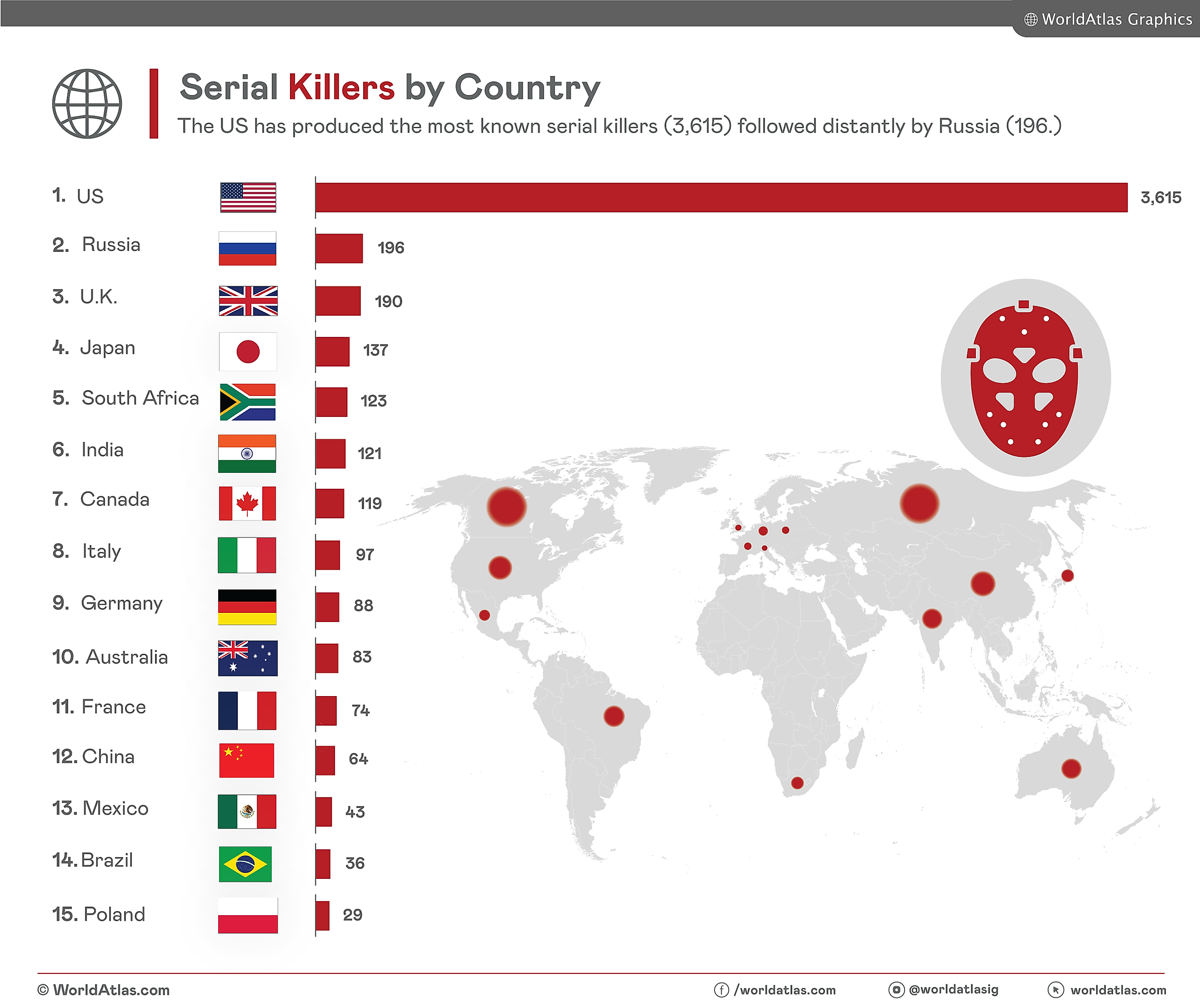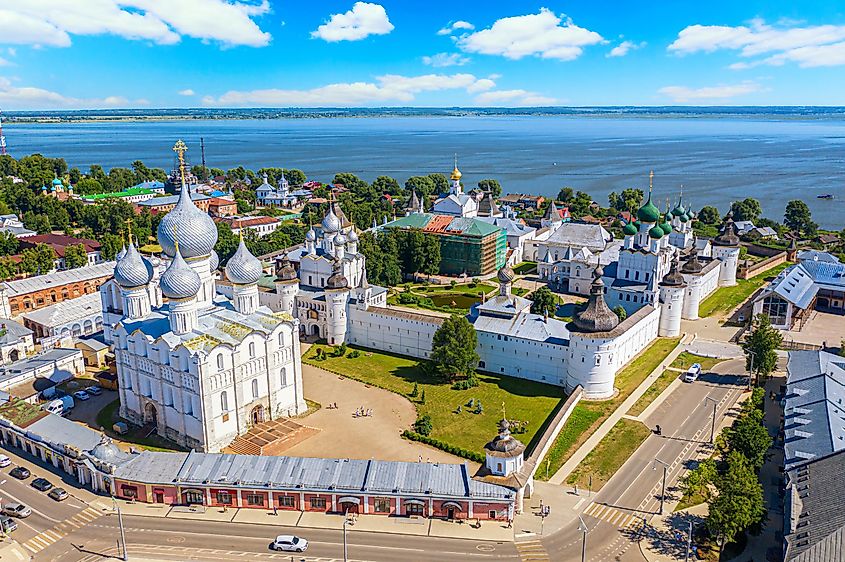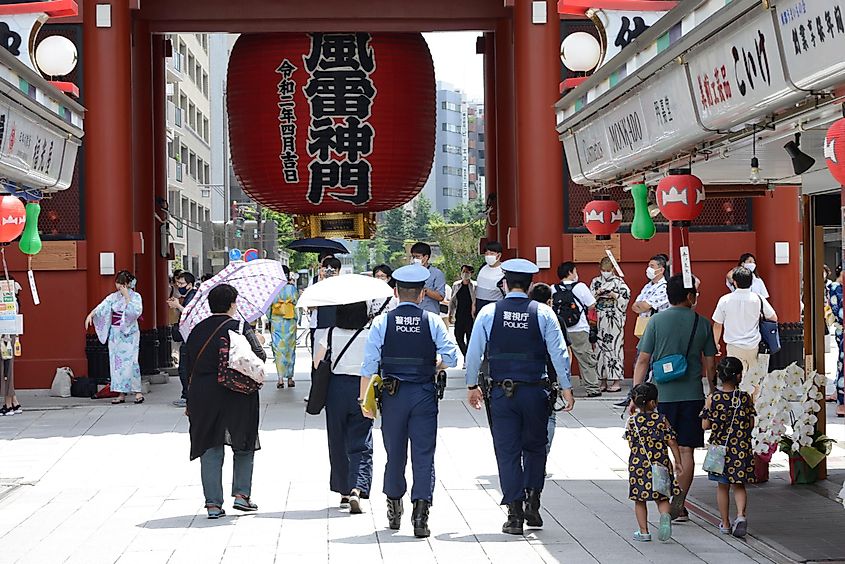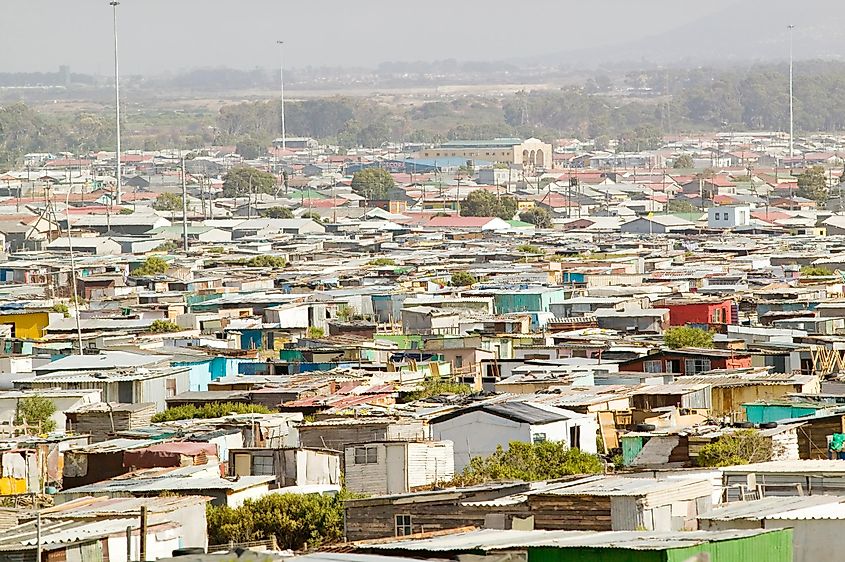
Countries That Have Produced The Most Serial Killers
The United States stands out globally for its notably high number of serial killers, accounting for 66.2% of 5,454 known cases. Therefore, it produces three times the perpetrators, when weighed against its population, than any other country. Following the USA in total serial killers are Russia, the United Kingdom, Japan, South Africa, and India. Regarding all known cases, 95 countries have documented at least one serial killer. Below, you will find detailed accounts of the ten countries with the highest prevalence of serial killers, along with an overview of some of their most atrocious perpetrators.

Top 10 Countries With The Most Serial Killers
| Rank | Country | Total Serial Killers |
|---|---|---|
| 1 | United States | 3,615 |
| 2 | Russia | 196 |
| 3 | United Kingdom | 190 |
| 4 | Japan | 137 |
| 5 | South Africa | 123 |
| 6 | India | 121 |
| 7 | Canada | 119 |
| 8 | Italy | 97 |
| 9 | Germany | 88 |
| 10 | Australia | 83 |
Jump to the table for all countries ranked by the number of serial killers.
The United States Has Endured 3,615 Serial Killers

In the United States, the prevalence of serial killers is notably high, at least partially due to aggressive law enforcement as well as the media coverage that brings these cases to light. Furthermore, increased media attention can lead to additional cases within a country due to a copy-cat effect. Among the most infamous is Ted Bundy, who confessed to 30 homicides in the 1970s and exploited his charm to gain his victims' trust. Another notorious figure is Jeffrey Dahmer, known for his gruesome acts involving 17 young men between 1978 and 1991, including cannibalism and preservation of body parts. Another chilling series is the case of John Wayne Gacy, who murdered at least 33 young men and boys in the 1970s, burying many of them beneath his house. While the light shines brightest on these many cases, it is again important to remember that high rates, while possibly due to cultural or societal flaws, may also simply reflect aggressive policing and reporting.
Russia Has Endured 196 Serial Killers

In a country as geographically massive as Russia, with the mixing of many people groups spread across the northern tips of Europe and Asia, it is no surprise to find psychological outliers. Among the most infamous is Andrei Chikatilo, known as the "Butcher of Rostov," who brutally murdered at least 50 women and children between 1978 and 1990. His ability to evade capture for years highlighted issues with Soviet police methods and societal denial about the existence of such criminals in their midst. Another infamous case is that of Alexander Pichushkin, dubbed the "Chessboard Killer," who aimed to fill the 64 squares of a chessboard with that amount of murders. Arrested in 2006 after killing at least 48 people, primarily in Moscow's Bitsevski Park, Pichushkin's lawsuit unveiled systematic deficits in Russia's criminal justice system regarding its ability to address mental health issues, which is foundational for deciphering motive.
The United Kingdom Has Endured 190 Serial Killers

It is arguable that the Western fixation on the personality of serial killers began in London in the 1800s— after all, a dense shantytown with high poverty is a vulnerable environment for the antisocial, and daily printed press was suddenly commonplace. Two of the most well-known cases are those of Jack the Ripper and Harold Shipman. Jack the Ripper, active in the late 19th century, terrorized the Whitechapel district of London with a series of at least five gruesome murders that remain unsolved to this day, and primarily targeted female prostitutes. His mysterious identity continues to puzzle both the public and experts, although some have pointed fingers at a handful of possible historical persons. In more recent news, Harold Shipman, a trusted general practitioner, was convicted in 2000 for the murder of 15 patients, although estimates suggest he may have killed over 200. Shipman's case is particularly disturbing due to his abuse of medical authority, which shattered the trust between doctor and patient.
Japan Has Endured 137 Serial Killers

In Japan, ranked fourth with 137 serial killers, two shocking cases are particularly apparent. Tsutomu Miyazaki, known as the "Otaku Murderer," horrified the country between 1988 and 1989. He targeted young girls, engaging in acts of murder and post-mortem atrocities. Miyazaki's disturbing crimes, including the retention of body parts as trophies, deeply shook Japanese society, which often prides itself on etiquette and formality. Additionally, Futoshi Matsunaga, alongside his accomplice Junko Ogata, perpetrated a series of heinous acts from 1996 to 1998 involving confinement, torture, and murder. Their victims included Ogata's family members, which is indefensible: nothing is off-limits to the deranged.
South Africa Has Endured 123 Serial Killers

Political and racial strife have plagued South Africa for decades, and in the midst of that chaos, predators have indulged themselves. Unfortunately, crime is rampant in areas that consist of sheet metal structures where large populations of people live in poverty. However, serial murder in South Africa is not limited by economic class or region. One infamous case is that of Moses Sithole, known as the "ABC Killer," who committed his crimes in the 1990s. Sithole lured women with the promise of employment before assaulting and murdering them, ultimately confessing to over 30 murders. Another nauseating figure is Stewart Wilken, also active in the 1990s, who earned the nickname "Boetie Boer" (Brother Farmer). Wilken was convicted of several murders, including that of his own daughter.
India Has Endured 121 Serial Killers

For many with family or friends from India, it is known to be a country of warm personality and hospitality— sadly, several incidences of serial killers stand out for their brutality in India's history. The first is Thug Behram, believed to be the world's most prolific serial killer, active in the 19th century. He allegedly murdered over 900 people by strangulation (this lofty estimate is hopefully nothing more than a myth), following the rituals of the Thuggee cult, which saw killing as a means to honor the goddess Kali. The second case is that of the "Stoneman," an unidentified killer responsible for at least 13 murders in the late 1980s. The killer targeted homeless individuals in Kolkata and Mumbai, brutally killing them with a heavy stone. The targeting of displaced individuals is a common pattern among serial killers of all countries: they pursue a fleeting sensation of power by targeting those with no defense.
Canada Has Endured 119 Serial Killers

A frigid tundra that was once home to indigenous tribes and European hunters, Canada is now a refuge for international hopefuls looking to begin a better life. For unknown reasons, this country with a reputation for friendliness has struggled with ferocious individuals: the cases of Robert Pickton and Clifford Olson are proof of that grim reality. Robert Pickton, a pig farmer from British Columbia, was convicted in 2007 for the murders of six women, though he claimed to have killed 49. His victims, mostly from vulnerable groups such as sex workers and drug addicts, were often overlooked by society. Meanwhile, Clifford Olson, known as the "Beast of British Columbia," terrorized the province in the early 1980s. He was convicted of murdering 11 children and young adults within a single year. Olson's case was particularly shocking for Canadians due to the age of his victims and his manipulation of the legal system, including a controversial deal with law enforcement that netted his wife and child $100,000 ($10,000 for the location of each victim).
Italy Has Endured 97 Serial Killers

One of the most appalling Italian villains is Leonarda Cianciulli, dubbed the "Soap-Maker of Correggio." In a macabre turn of events during the 1930s and 1940s, Cianciulli murdered three women in Correggio, Italy, and infamously turned their remains into soap and teacakes, which she then gave to acquaintances. Another infamous case is that of Donato Bilancia, who terrorized the Italian Riviera in the late 1990s. Bilancia was convicted of murdering 17 people, including sex workers, businessmen, and a child, driven by a personal vendetta against those he felt had wronged him.
Germany Has Endured 88 Serial Killers

The global public often forgets the turmoil Germany has experienced in the last 200 years, which consisted of 19th-century imperial struggles, the world wars (albeit somewhat self-inflicted), and soviet rule that lasted until 1990. In that chaos, toward the beginning of the 20th century, two terrors roamed: Fritz Haarmann and Peter Kürten. Haarmann, known as the "Butcher of Hanover," committed his crimes in the early 1920s, preying on young men and boys whose dismembered remains he sold as meat. Peter Kürten, dubbed the "Vampire of Düsseldorf," terrorized the city in the late 1920s with a series of disturbing murders and assaults. Kürten's case, extensively covered by the media, was foundational to studies of criminal psychology, which arguably created a modicum of 'good' out of such evil.
Australia Has Endured 83 Serial Killers

In Australia, with 83 recorded serial killers, the cases of Ivan Milat and John Wayne Glover are blemishes that cannot be erased from history. Ivan Milat, known as the "Backpacker Murderer," was convicted in 1996 for the murders of seven young travelers in New South Wales' Belanglo State Forest. These killings, occurring between 1989 and 1993, dismayed the country due to their sheer cruelty and the targeting of unsuspecting tourists. Conversely, John Wayne Glover, dubbed the "Granny Killer," terrorized Sydney's North Shore in the late 1980s by preying on elderly women, leading to a heightened sense of vulnerability among this demographic. His 1990 conviction brought a terrible realization to Australians: suburban communities, seemingly-safe, are not immune to the horrors of serial murder.
Defining And Reporting Serial Killers
Serial killers, as defined by FBI agent Robert K. Ressler, exhibit varied motives and patterns, often driven by personal history and environmental influences such as childhood abuse and detached parental relationships, leading them to target victims based on gender, age, personality traits, profession, or even randomly. Regarding statistics and assessment, it is important to remember that stronger police and media infrastructures, such as in Europe or the United States, lead to a larger historical total simply because criminals are more likely to be reported and caught. Many countries may have lower totals if offenders are able to completely avoid attention.
After the dust settles and the public realizes the plight that has befallen them after a string of killings, a common desire is to know 'why?' If the how and 'why' can be isolated, perhaps a solution is possible. As the data shows, however, this is an occurrence that appears in the majority of societies, and an imbalance of reporting and data is often to blame when it appears one country is affected more or less than another. Certainly, if vulnerable people such as sex workers or the homeless are often the target demographic for perpetrators, an investment in welfare programs would likely reduce the rate. The reality is that the forces that create these killers are likely too complicated for a single cure-all, and governments need to stand together to create conditions that protect all citizens in all countries.
All Countries Ranked by the Number Of Serial Killers
| Rank | Country | Total Serial Killers |
|---|---|---|
| 1 | United States | 3,615 |
| 2 | Russia | 196 |
| 3 | United Kingdom | 190 |
| 4 | Japan | 137 |
| 5 | South Africa | 123 |
| 6 | India | 121 |
| 7 | Canada | 119 |
| 8 | Italy | 97 |
| 9 | Germany | 88 |
| 10 | Australia | 83 |
| 11 | France | 74 |
| 12 | China | 64 |
| 13 | Mexico | 43 |
| 14 | Brazil | 36 |
| 15 | Poland | 29 |
| 16 | Czech Republic | 29 |
| 17 | Chile | 24 |
| 18 | Hungary | 24 |
| 19 | Colombia | 23 |
| 20 | Austria | 23 |
| 21 | Spain | 20 |
| 22 | South Korea | 19 |
| 23 | Turkey | 14 |
| 24 | Netherlands | 13 |
| 25 | Sweden | 12 |
| 26 | Belgium | 12 |
| 27 | Ukraine | 12 |
| 28 | Argentina | 11 |
| 29 | Thailand | 11 |
| 30 | Greece | 10 |
| 31 | New Zealand | 10 |
| 32 | Belarus | 9 |
| 33 | Finland | 9 |
| 34 | Iran | 8 |
| 35 | Estonia | 7 |
| 36 | Bulgaria | 6 |
| 37 | Denmark | 6 |
| 38 | Indonesia | 6 |
| 39 | Romania | 6 |
| 40 | Kazakhstan | 5 |
| 41 | Latvia | 5 |
| 42 | Slovakia | 5 |
| 43 | Egypt | 4 |
| 44 | Iraq | 4 |
| 45 | Ireland | 4 |
| 46 | Israel | 4 |
| 47 | Norway | 4 |
| 48 | Switzerland | 4 |
| 49 | Taiwan | 4 |
| 50 | Bolivia | 3 |
| 51 | Ecuador | 3 |
| 52 | Lithuania | 3 |
| 53 | Pakistan | 3 |
| 54 | Panama | 3 |
| 55 | Portugal | 3 |
| 56 | Yemen | 3 |
| 57 | Bahamas | 2 |
| 58 | Bangladesh | 2 |
| 59 | Croatia | 2 |
| 60 | Hong Kong | 2 |
| 61 | Morocco | 2 |
| 62 | North Macedonia | 2 |
| 63 | Peru | 2 |
| 64 | Rwanda | 2 |
| 65 | Slovenia | 2 |
| 66 | Uruguay | 2 |
| 67 | Uzbekistan | 2 |
| 68 | Zambia | 2 |
| 69 | Afghanistan | 1 |
| 70 | Algeria | 1 |
| 71 | Bermuda | 1 |
| 72 | Bosnia and Herzegovina | 1 |
| 73 | Costa Rica | 1 |
| 74 | Cyprus | 1 |
| 75 | Eswatini | 1 |
| 76 | Fiji | 1 |
| 77 | Ghana | 1 |
| 78 | Iceland | 1 |
| 79 | Jamaica | 1 |
| 80 | Jordan | 1 |
| 81 | Kyrgyzstan | 1 |
| 82 | Lebanon | 1 |
| 83 | Malta | 1 |
| 84 | Moldova | 1 |
| 85 | Nigeria | 1 |
| 86 | North Korea | 1 |
| 87 | Paraguay | 1 |
| 88 | Philippines | 1 |
| 89 | Saudi Arabia | 1 |
| 90 | Serbia | 1 |
| 91 | Singapore | 1 |
| 92 | Tunisia | 1 |
| 93 | Venezuela | 1 |
| 94 | Vietnam | 1 |
| 95 | Zimbabwe | 1 |
All Data gathered from Radford University [1] [2] and Wikipedia. Note that when two or more individuals collaborate, this is considered a single case.







